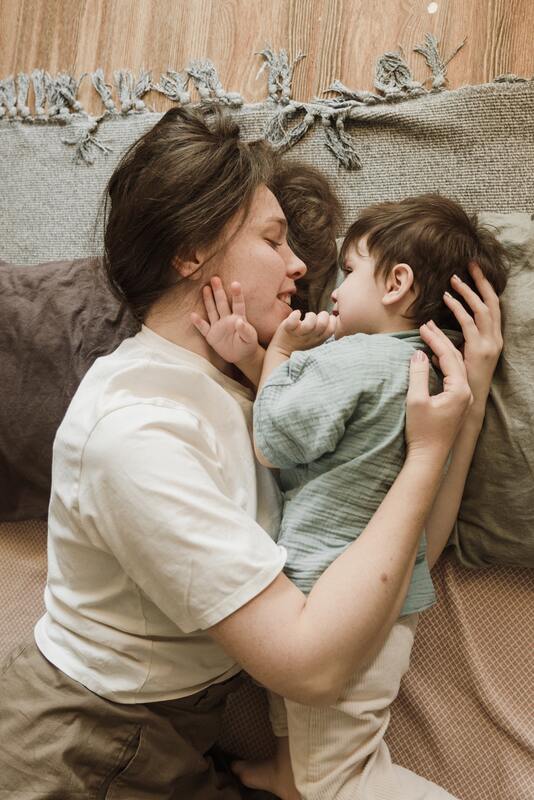 In this era of economic uncertainty, many parents searching for sleep training help for their toddlers, babies and children are coming up with creative ways to help pay for all of that support and assistance to get their children sleeping all night. Working with an experienced, knowledgeable pediatric sleep coach can be a big financial commitment. Hiring a sleep consultant or sleep trainer can be costly depending on the sleep consultant’s experience and services offered, so make sure you now exactly what you’re getting for your money. Since I trained as a sleep consultant 8 years ago, it’s become much more common for parents to seek assistance with sleep training, yet insurance companies haven’t quite caught up and cover it along with other insurance benefits such as lactation consultants and chiropractors. One avenue parents have researched is how to get their medical insurance to pay for it. Now it's not guaranteed that insurance will pay for sleep training but it’s possible you can use your flexible spending account (FSA) or health savings account (HSA) to pay for it. I’ve had a few clients come back to tell me they successfully had my services paid for by their insurance. Get Pre-Approved First, check with your individual insurance carrier to see if they cover Sleep Services, Newborn Care particularly out of network Sleep Consultants. make sure that you find out exactly what you'll need in order to be paid. Sleep Consultants are considered alternative, out of network therapies, thus requiring parents to pay upfront and be reimbursed by their insurance company. Make sure that you check with your carrier to see if they cover it. Determine the Required Documents Your insurance company should be able to tell you exactly what paperwork is required, such as a detailed invoice, dates of service, exactly what services are being utilized or diagnosis code. How to Pay for a Sleep Consultant You may need to pay upfront and be reimbursed, or use your HSA debit card to pay. Either way, you’ll get a detailed receipt that you can send back for reimbursement. Finding a sleep consultant near you that fits your family both in personality, their services and support can be a big financial decision and families should explore alternative routes. And if you are not able to get your health insurance to pay for a sleep coach or consultant, there are a few other alternative routes including crowdsourcing, gift certificates and buy now- pay later options as well. If you find a sleep consultant that you really want to work with and feel they believe the service they offer is worth it, look at different ways of paying for it so that you and your child can get to sleep that you need.  From Southeast to Northwest DC, moms across the city are juggling it all... work, homelife, their children and particularly, their sleep routines. And when their toddlers and babies aren't sleeping, neither are they. The toll sleep deprivation takes on a mother and her family is far reaching... everything from missed deadlines at work and trying to get a baby to nap when the virtual work-from-home meeting is starting, to having little to no time in the evening to spend with a spouse, work on house chores or just a little time alone. So if you're dealing with a sleep regression, popping in a binkie/pacifier multiple times per night or trying to decide which sleep training method is right for you, contact us and set up a free introductory call to ask any questions you like.  Traveling with kids can be a thrilling and enriching experience for the whole family. While it may require some extra planning and patience, the memories and bonding opportunities created during these adventures are truly priceless. One essential aspect of traveling with kids is preparation. Begin by researching kid-friendly destinations that offer a variety of activities suitable for different age groups. Consider destinations with interactive museums, amusement parks, or outdoor playgrounds. These places often provide opportunities for children to learn, engage and burn off excess energy. When it comes to packing, ensure you have all the essentials like snacks, extra clothing, and comfort items such as a favorite toy or blanket. It is also wise to bring along entertainment options like coloring books, puzzles or electronic devices for longer journeys. There's always the option of shipping yourself items from Amazon or Instacart to reduce the amount you have to pack in your suitcases, or purchasing items such as diapers once you arrive. Try to involve your kids in the planning process; it gives them a sense of ownership and excitement about the trip. For travel days, sleep rules go out the window. Getting your child to sleep on the plane or in the car makes the trip go by much smoother. Hold your child, rock them…do whatever to help them sleep during travel. During the trip, maintain a flexible schedule that allows for breaks and downtime. If your child still naps, prioritize naps over keeping them awake all day. Kids can easily become overwhelmed or tired, so it's important to listen to their cues and adjust accordingly. Even children who don’t normally take a daily nap will appreciate the downtime in the afternoon for a bit. Incorporate regular snack breaks, rest stops, and opportunities for physical activities to keep everyone energized and happy. Lastly, embrace the unexpected and utilize teachable moments. Traveling with kids exposes them to new cultures, traditions, and experiences. Encourage them to try new foods, interact with locals, and learn about the history and customs of the places they visit. These experiences foster their curiosity, broaden their perspectives, and create lifelong memories. Overall, traveling with kids can be challenging but immensely rewarding. By planning ahead, staying flexible, and nurturing their sense of wonder, you can create unforgettable family adventures that will be cherished for years to come. And when you get home, get right back on your child’s sleep routine and schedule. If they had to share a room with you away from home, get your child right back into their own bed the first night back. Want to know exactly what to pack for your infant or toddler? Check out our ultimate packing lists. Traveling this summer and aren’t sure about your particular travel plans to make it easier? Schedule a free call with us.  I had no idea what a sleep consultant was 10 years ago. I was leaving my corporate job because I was tired of working 60 hours per week, carrying 2 cell phones and never seeing my daughter. I knew I wanted to keep working and be able to spend more time with my daughter. Once I got my daughter sleeping through the night, I fell in love with getting proper sleep coupled with the idea of coaching tired parents to help their entire family sleep all night. I absolutely love my job! Getting to help tired moms and dads to get their family sleeping well is so rewarding when all of our efforts pay off. Maybe you have an interest in pursuing this work as well! Here’s how to become a pediatric sleep consultant. First, you need to take a pediatric sleep consultant course. There are a few different factors you need to consider when choosing a sleep consulting course. You’ll need to decide is if you’d like to take the course in-person or online/remotely. There has been a rapid rise in online courses over the past few years (thanks Covid!) that have made it incredibly easy to access sleep consultant training from virtually everywhere. However, if attending an in-person class is how you learn best, you’ll want to look for one near you. Costs vary from course to course and you’ll need to evaluate what you’re getting for your hard-earned money. Make sure you look at the curriculum of the course and the certification requirements. The next thing you’ll need to decide is if the course you are looking at has all of the information you’ll need to learn. To be a professional sleep consultant you’ll need to know all about the different sleep training methods as well as the science of sleep, what's normal for newborn, infant and toddler sleep, and have an understanding of the challenges to a child's sleep at different ages. Sound like a lot? Don’t stress. A course will walk you through each of these points and guide you on the journey to becoming a pediatric sleep consultant. There are many, many options out there for courses. If you do your research using the tips I’ve given you, you’ll be able to find a course that is just right for you. Or just ask and I'll provide you with my favorite courses. The last thing you will need to have is drive and motivation. Decide if you want to work on a team with another sleep consultant or want to start your own business. Each path has its pros and cons; if you want to start your own business, you’ll need to do things like create a website and social media presence, develop a marketing plan, handle bookkeeping and finances and work with clients. Working for another sleep consultant eliminates most of those administrative tasks and lets you focus on what you like doing, working with clients! If you want to have a rewarding side-gig or replace a full-time income, sleep consulting can be a great way to do that. Ask me how! Email me at [email protected] and let’s schedule a quick chat to answer any questions you might have. Happy learning!  As technology continues to progress, there is always some kind of new flashy new baby gear that claims to make your baby sleep. Registries grow and become more complicated. The choices are never ending! New parents find themselves torn over which items to buy that will give them the *most* success to get their newborn sleep. With all of the new, advanced sleep options for baby, it’s important to consider long and short-term goals before rushing to purchase the newest baby gear. Every newborn should have a bassinet, crib, portable crib, or baby box as their own sleep space. Following Safe Sleep guidelines reduces the risk of sudden infant death syndrome (SIDS). But have you heard of the Snoo bassinet? The Snoo is a bassinet made by the company Happiest Baby that comes equipped with sound sensors, wifi, white noise speakers and a robotic motor that rocks your baby to sleep if your baby makes noise. Sounds incredibly fancy, right? All of that sleepy time magic comes with the price tag of $1,600. You also have the option now to rent a snoo near you at a cost of $500 per month! That's on top of all the extra baby gear you have to buy, including a car seat, stroller and most importantly...lots of diapers! Parents frequently ask me my opinion of the Snoo and overall, it's a great tool...until baby grows out of it. I have worked with many clients that started out working with me when their baby was in the Snoo and we successfully transitioned to a crib. All the babies are sleeping well…now. Here are a few things you should consider before jumping in to buy or rent a Snoo. How does the Snoo work? The Snoo is an all-in-one bassinet and baby soother. It gives you the smaller space required to have your newborn sleep in your room without taking up much space, has white noise and rocks your baby to sleep. So, does it work…in short…yes! But only for a limited amount of time. Online reviews rave about how well the it rocks your baby back to sleep. Having the bassinet do all the work for you sounds amazing! The added sound machine and the included swaddle are both accessories of the Snoo, eliminating the need to get these separately. The biggest downside to the Snoo or any motion bassinet is the creation of a dependency on motion to get your child to sleep. When baby outgrows it around 4-6 months of age or simply is too big for it, you’ll need to transition to a full sized crib, mini-crib or portable crib AND you’ll need to work on getting baby to sleep without motion or rocking. What’s the cost of getting a newborn to sleep? This first thing that jumps out at me when considering the Snoo is the price tag. $1,600 for a bassinet?! However, as a sleep consultant, I truly believe that good sleep is priceless! Consider this; a bassinet is not forever, it’s a good tool to use for a few months of life. While a crib can be used for several years, a bassinet is typically used for about 4-6 months (and that’s if baby doesn’t outgrow it sooner!). All things considered, your baby will be using this bassinet for roughly 180 days. And once baby outgrows the Snoo, you’ll still need a full sized crib! For some, it’s a great tool, for others they might want to get more bang for their buck. Will I still have to sleep train if I use the Snoo? If you think of falling asleep like a skill that we have to learn, then yes, you will have to eventually teach baby to fall asleep without the motion of the Snoo. For instance, if a baby is constantly being rocked to sleep by a bassinet, they form a sleep habit. Once it comes time to transition from the Snoo to the crib, then this habit will need to be changed in order to teach baby how to fall asleep without the motion. The transition may prove to be harder than it would be with a standard bassinet or portable crib and parents should consider if this challenge is worth it. For some babies, the change from the Snoo to a crib can be hard and will require some prior planning to manage the transition. Weaning and transitioning from the Snoo can be done cold turkey but parents should consider gentler methods to do it as well. So what should you do? Consider cost, length of use and your desire to avoid sleeping training later before purchasing or renting one. If the cost isn't worth it or you don't see long term benefits of using it, consider introducing healthy sleep habits early on. No matter what bassinet you use, you and your baby CAN achieve good sleep. By doing a bit of research and weighing out the options, you and your partner can make the right decision for your family. What about you? Have you ever used a Snoo? What are your honest reviews? I would love to hear your thoughts! And if you’re not sure how to transition out of the Snoo, please reach out. Happy sleeping!
It's Sleep Awareness Week, and a new report from the Centers for Disease Control and Prevention finds that 44% of single moms living with children under the age of 18 fall short of recommendations for proper sleep.
My top recommendations for single parents to get a little more restful sleep!
Watch the video for WUSA9 below:
I can help with that last one! Connect with me today to see how we can optimize your kids' independent sleep, to make sure you are getting your best chance for your own much-needed rest.
Things to do when your kid won't let you out of the room.  Here’s the scenario: you’ve all had a long day, you’re tired and you’re totally ready for your toddler to go to bed for the night. You do the bath, the PJs, brush teeth (maybe), read a story, sing a quick song, pick a new stuffed animal…then you go to put your toddler into their crib and your sweet child stands there and screams at the top of their lungs! It might catch you off guard. It might be something new. Likely, you’ve entered a new phase of growth. I promise it’s normal, if only for a short time for a toddler to scream and protest at bedtime, but won't last forever. Why does my toddler scream? Here's what's going on: Your toddler is learning! Toddlers are learning how to do things, how to get things and what's expected of them. They want to have all the independence in the world, but have no idea what to do with it. For instance, your toddler wants to run free in a parking lot filled with cars...do you let him? Of course not! Your little one likely doesn't understand cause and effect...the same thing goes for bedtime when your toddler would rather be playing and having a good time with you than go to bed! Toddlers are also learning that their actions result in a reaction from parents. What do you do when your toddler screams at bedtime? As parents, it's up to us to set limits. We can fall all too easily into the trap of letting our child run the home. I mean, they are incredibly needy and can’t do much for themselves right? But as parents, we know what is best for our child (aka they need to sleep to function…) and we have our own sleep needs as well. Setting limits helps us to meet our own needs in addition to the needs of our child when they can’t recognize them on their own. So how do we set these limits? It can become a bit of a dance, but it all starts with a firm, predictable routine. Each night, do the same routine so it is clear to your child that bedtime is approaching and they will be sleeping soon. Taking a bath, getting into pajamas, brushing teeth, etc. are some things that can be a part of your routine. Here’s where the fun comes in! Since toddlers are discovering their independence, they are likely to want to gain control of every situation they can, which can be a part of the reason why they are struggling with bedtime. The key to dodging big power struggles is to give your child bite-sized bits of control throughout the evening. What do I mean? Consider this. Your child cannot choose whether or not they want to go to bed, but they can choose if they want the green pajamas or the blue pajamas. See what I mean? If your child is given the chance to make age-appropriate decisions, they will feel more in control. Let them choose the bedtime story or the song you sing to them. Allow them some independence in the smaller things while standing firm in the big picture. Once your child feels like they have some control, it will be easier to enforce the limits you’ve set surrounding bedtime. One of these limits should be a specific set bedtime between 7-8:00pm, and can also include expectations such as reading only one story, singing just one song, etc. Being firm, but gentle with your child will send the message that this is a solid rule that they are expected to follow. Of course, with each child and situation, it’s important to use your own judgment. Come up with a plan. Predict what may happen before it occurs and plan out your responses. What will you say if your child cries for you to stay with them? Maybe you settle them in and tell them you’ll check in on them in 10 minutes. Maybe you remind them of what a great day they had and encourage them to think about what to do tomorrow. Maybe you let them cry for a little bit to show them you mean business before checking in on them again. Whatever you choose to do, make the expectations clear. And remember that this is only a season and you won’t be dealing with this forever! Have you ever been trapped by an overtired toddler? Are you stuck in a rut and can’t figure out what to do next? Schedule a free call with me and I’ll help you troubleshoot!  Twins! Twice the fun and double the love. With any baby, sleep training can be hard. As a parent of twins, it can seem downright impossible. But sleep training twins can be successful with a few tips to get you started. The biggest thing to consider when getting ready to sleep train twins is their adjusted age. Chances are, when your babies were born, they were not full term. This means they have a bit of catching up to do developmentally before they’re ready to form the best sleep habits. If you’re calculating their age based on the day they were born, you may be attempting to sleep train before they are ready. A big misconception that I hear often is that sleep training requires letting your baby cry it out. This can make a twin parent cringe! How can you let one baby cry it out with the other one trying to sleep nearby? The cry-it-out method is not the only sleep training method you can use. Look into other methods such as the pick up/put down method or the chair method (which could potentially be used for both twins at once!). In addition, if one baby is sleeping better than the other, consider having them sleep in another room temporarily while you train their sibling. Twins tend to be on the same routine once it’s established, but getting there may take some work. Listening to your baby's cues also helps immensely. As new parents, we often feel the need to document everything and feed on a schedule. During the night time, let your babies sleep and only feed them if they wake! This may seem pretty obvious, but if your baby is gaining weight as they should be, get the sleep while you can and let them tell you when they’re ready to eat again. Lastly, as a twin parent, celebrate your successes no matter how small! You are working so hard and any steps you make towards better sleep should be recognized. Dropped a night feeding? Hooray! Got both babes to self-soothe? Boom! Give yourself a pat on the back. I want to know, have you trained infant twins? What tips and tricks worked for you? There are three key aspects to focus on in helping your child develop healthy and effective sleep habits. When working with clients, here is what I focus on first:
1. A Regular Bedtime Routine Little ones thrive on consistency. They look to us, the parents/caretakers, to guide them in what they should be doing and how/when/where they should be doing it. This is why it is so important to develop routines. Babies and toddlers need consistent routines to orient themselves to where they are in their day and be able to anticipate what is coming next. Creating a regular bedtime routine that begins at (relatively) the same time each night will cue your baby to the fact that it is almost time to sleep. A simple bath, pajamas, a story/song, then off to bed routine can do wonders as long as you repeat the same actions in the same order each night.. Develop your routine based on what works best for you and your child! 2. Boundaries Around Sleep If you’ve been around a toddler for more than 5 minutes you’ll know that they love to push boundaries. This is a completely normal developmental milestone, and it’s important for toddlers because they are looking to you to communicate to them what is allowed and what is not. To avoid frustration and confusion, it is important to set clear boundaries for our children, and sleep habits are no exception. Beginning when Baby is young, you can communicate that the expectation at bedtime is for them to sleep in their own bed. Other boundaries you can enforce could be keeping the baby in their room/bed until a certain time each morning (who wants to get up at 5am??) or making sure your toddler is staying in their bed all night. Decide on some healthy boundaries that will serve everyone in your household. 3. Consistency and Holding Boundaries With both of the above tips, consistency is key. As I mentioned before, babies and toddlers look to us to orient themselves within their day and the world at large. Keeping consistent routines and boundaries allows them to know what to expect as well as how to act. This is crucial for them to be able to develop a sense of security and understand the world around them. You’ll begin to notice your toddler taking initiative when you prompt them to begin their bedtime routine. Keep it consistent and everyone will be on the same page! What does your bedtime routine look like? What healthy boundaries have allowed your child to develop good sleep habits? I want to take a minute today to unpack a question I get asked a lot as a sleep consultant; when is the best time to sleep train my baby/toddler?
The answer to this question varies for everyone, but it has to be when you’re ready! If your baby or toddler is sleeping well all night, you and your spouse/partner are sleeping 7-8 hours at night and you love your situation, then rock on! If you’ve decided that your situation is no longer working for you, you’re not getting enough sleep, your child is up half the night and everyone is sleep deprived, it might be time to change what you’re doing to improve your child’s sleep. Here are a few guidelines you need to consider before starting any sleep training method. When your child is healthy If your baby or toddler is having a hard time sleeping due to a cold or illness, it’s not a good time to start making changes. We want to give our child the best circumstances to succeed at sleep training, so wait until they are physically feeling their best. This applies to teething babies too or babies who have recently received vaccinations. When you have a plan A big mistake parents make is jumping into sleep training without having a solid plan of how they’re going to do it. Have you decided what method you’re using? Do you know what to do in different situations? What boundaries have you set surrounding sleep training? Are you and your partner on the same page? Make a plan together to make sure you are on the same page and can support one another through this transition. Make sure that you and your partner/spouse are clear in your roles and how you’ll handle things such as getting your little one to fall asleep, night wakeups and naps. When you are ready to commit Babies and children learn through consistency and routine. Make sure you are ready to make changes to your current sleep routine and you can commit to a sleep training plan for at least a few days. If you’re not ready, no sweat! Wait until a time when both you and your partner can fully commit together. Have you experienced failed attempts at sleep training? Did you try sleep training on your own and it didn’t work? What aspect of sleep training doesn’t seem to be working for you? Reflecting on past experiences using these guidelines can set you up for success in your sleep training journey. And if you need any help answering your questions, set up a free call with me to help pinpoint the issue and determine the steps you need to get your kiddo sleeping all night long. Happy sleeping!  New parents are oftentimes surprised to learn that hitting certain development milestones in their baby’s life will interfere with their sleep habits. One of these first development milestones happens at around four months of age. Commonly referred to as the four month sleep regression, it’s a huge mental and physical growth spurt, and it is no joke! Babies’ sleep patterns shift during this time and you will find that they wake often during the night and have a hard time going back to sleep. From the moment they are born, babies' brains are constantly evolving and adapting to the new environment. During this time, your baby may be learning new skills such as rolling over or sitting up. This intense time of physical effort and growth can interrupt even the best sleeper’s habits. If your awesome sleeper of a newborn all of a sudden starts waking at all hours, and it’s left you thinking “what in the world is going on?” then you may have entered the four month sleep regression. Newborns typically sleep around 16-18 hours a day, but by the age of 3 to 4 months, babies begin sleeping a little less at around 15-16 hours per day. This adjustment can be tricky for baby to navigate and can also result in additional night time wakings. So what can you do? First, it’s important to watch Baby to understand what is going on. Is this a sleep regression caused by developmental milestones, or might there be something else at play such as an illness? Second, since this is an intense period of learning new skills, it’s a good idea to allow your baby uninterrupted time to practice these new skills during the day. It can be easy to want to step in when they are struggling with things like rolling over or grasping an object, but allowing them space to attempt a new skill, will also help them to exert effort and become more tired when it comes time to nap or sleep. Third, make sure Baby is taking in full feeds during the day and right before bedtime. Any period of brain development and growth requires more caloric intake for babies. Ensuring they are full and satisfied will keep hungry tummies from waking baby when they should be resting. It’s ok to offer a quick snack feed about 20-30 minutes before you get Baby ready for a nap to top him/her off. Lastly, as I always recommend, stick to your routine and keep Baby’s room dark. Having a consistent and predictable bedtime routine will cue Baby to the fact that it’s time to sleep. When wakings do inevitably happen, keeping the room as dark as you can will aid in helping Baby to fall back asleep. You can’t avoid sleep regressions altogether, but you can control how you handle them. Remember that babies can’t tell us what’s going on, so we want to respond with love and comfort. From a few days to a week or two, the regression will end. Remind yourself that this is a short term hiccup and baby will go back to sleeping at night soon. Let's hear from you! Have you made it through the four month sleep regression? What worked for you? If you’re not sure if it’s the 4 month, or any other sleep regression, book a free 15-minute call with me and we can talk specifically about your situation to determine what’s going on. As young parents, you get a lot of unsolicited advice from family, friends, and even strangers. One tip that has been passed down through the generations is the idea of putting cereal in baby’s bottle of milk to help them sleep longer or through the night. But is this actually safe?
The most recent recommendations that have come out of the Center for Disease Control and the American Academy of Pediatrics strongly urge parents not to put rice cereal in their baby’s bottle. Here is a quote from a study conducted by the AAP. “The American Academy of Pediatrics (AAP) recommends against the routine use of rice cereal in the bottle (RIB) to improve infant sleep patterns. The AAP also states that the use of RIB is a choking hazard and may lead to excessive weight gain. Additionally, RIB as a milk thickening agent can cause a change in stool consistency and result in constipation.” (Milanaik, Ruth et al.) In addition to the risk of choking, placing cereal in the bottle can confuse a baby who may be used to drinking a thinner formula or milk and will hinder their ability to tell the difference between a solid food and a liquid. Placing any type of cereal in baby’s bottle has not been backed by any evidence suggesting that it helps baby to sleep. There has also been no evidence suggesting that cereal in the bottle will help with reflux or spit up. The risks far outweigh the potential benefits. Instead of placing cereal in baby’s bottle, try feeding them some cereal with a spoon at dinner! If baby is old enough for solids and you are concerned that their tummy may not be full enough with just their bottle, it is perfectly acceptable to feed before bed. Other things you can focus on to improve your baby’s sleep habits are keeping a consistent routine each night, making sure their room is dark, and making sure the temperature is comfortable in their room. Happy Sleeping! Source: Milanaik, Ruth, et al. “Prevalence and Parental Perceived Efficacy of Rice Cereal in Bottles Used as a Natural Sleep Aid for Infants Aged 0-11 Months.” American Academy of Pediatrics, American Academy of Pediatrics, 1 Aug. 2019  Sleep training while living in a shared space, such as an apartment or condo building, can be very intimidating and scary, but it doesn’t have to be! If you make a plan for yourself, you can succeed in your sleep training journey without upsetting your neighbors nearby. Here are a few tips to get you started. Make a plan that will show results quickly. There are many sleep training methods you can choose from; however, some take longer to implement and show improvement in your child’s sleep than others. If there is a chance that your sleep training attempts may disrupt your neighbors, try to choose a method that will make the transition as smooth and quick as possible. Task 1: Research different sleep training methods to determine which one you feel the most comfortable using and understand how the method will work. Give your child their own sleep space (if you share a room) If you’re considering moving your child to his/her own room, this might be the optimal time to do it. Or if you want or need to continue sharing a room with your baby, create a small way of giving your child their own space by installing a partition, curtain, room divider or using a Slumberpod. It will be much easier for your child to sleep train if they are not able to see you as soon as they wake up. Task 2: Determine where your child will sleep Start on a weekend Since most people work a typical Monday-Friday work week, it would be most considerate to start your sleep training on a Thursday or Friday night. Although it may not be enjoyable to be woken up to the sounds of a baby on a day off, it can prove even harder for someone to lose sleep when they need to be ready for work the next day. Task 3: Determine the optimal night to start working on your child’s sleep. Move your child’s crib away from any shared walls. If your baby or child sleeps along a shared wall, it may be a good idea to move their crib to a different wall to reduce the noise that your neighbor may be hearing. This can be temporary, just until baby is sleeping well without much protest. The use of a white noise machine can also be helpful to dampen the noise as well! Task 4: Set up your child’s room. Have a conversation about it! If you are friendly with your neighbors, let them know what’s going on! If possible, you can give your neighbors a friendly heads up as to when you’ll begin sleep training and what they can expect. Although you ultimately decide what is best for your family, you could potentially avoid times that sleep disruption may be distressing to your neighbor such as leading up to a big event or during an illness. You may be surprised! Your neighbors could be a big support for you during this time as well. Task 5: Give the neighbors a heads up. Have you ever sleep trained while living in a shared space? What worked well for you? And if you need help talking through any of these tips, set up a free call with me so we can discuss the best plan for your family. Simply go to: https://calendly.com/sleepsolutionsbc/15minutes to book your call. Happy sleeping! Christine  The topic of co-sleeping is one of the most controversial topics people encounter when they become new parents. In the time I’ve worked with families over the last eight years, I’ve found families fall into 1 of 2 categories:
If you’re considering cosleeping or bedsharing with your toddler or child, the first thing I want you to ask yourself is why. What has led you to this decision? Are you and your child having difficulty sleeping at night? Are there cultural reasons? Is it something you enjoy doing to feel close to one another? What does your gut tell you? Note: Sleep Solutions by Christine advocates for safe sleep practices and we follow the American Academy of Pediatrics guidelines for safe sleep. Babies and toddlers should have their own sleep space such as a crib, portable crib or bassinet. Some people state that their reason for cosleeping with their child is because it allows them to feel close to their child. If you fall into this camp, you (and your partner/spouse) enjoy cosleeping and everyone is getting plenty of sleep, then rock on! Keep it up! However, if you fall somewhere in the “I don’t enjoy this” camp, it may be time to reconsider cosleeping and make some changes. “‘Cause I love getting kicked in the ribs all night!” –said no parent ever. Cosleeping with your toddler won’t make them sleep all night long. In fact, it may make you and your child’s sleep WORSE! Cosleeping essentially turns you into a giant lovey for your child. You become their prop in their sleepy-time routine and a habit forms that doesn’t allow your child to sleep without you. How exhausting for you! In order to break out of this routine, you need to look at the original root of the problem. What is preventing your child from sleeping in their own space? How can you reassure them that you are near without needing to be right next to them? Is there a way you can create boundaries to be able to meet both your child and your own sleep needs? Co-sleeping can be an amazing way to bond with your little one. But if it’s anything less than bliss for you, breaking out of the cycle can be a challenge. If you’d like some help strategizing how to create beneficial sleep habits in your own home, set up a sleep support call with me today!  Mom guilt can be such a burden, am I right?? Pretty much any decision you need to make as a mom (or dad!) is a decision someone can shame or judge you for. As a mom, a sleep professional and Certified Lactation Counselor, I am a big advocate for doing what is right for your own family and situation. A hot topic in the world of parenting (and especially in sleep training) is breastfeeding. Should you do it? Can you do it? How can you do it successfully? And on and on… To be completely up front…YES YOU CAN! I’ve seen many people tout that breastfed babies are doomed to have terrible sleep due to the on-demand schedule many nursing mamas/babies follow. As you may have gathered about me, the biggest thing I focus on when it comes to getting your baby to sleep is their habits. Recognizing what baby relies on to help them fall asleep gives us a clue as to how their little bodies and brains perceive the process of falling asleep and staying asleep. My biggest advice I give when it comes to breastfeeding is this: Breastfeeding, even if you're an exclusive pumper, is a way to feed your baby. It shouldn't be the way that you use to get your baby or toddler to fall asleep. This, I might add, is the same advice I give to bottle/formula-fed babies. Hear me out here. While nursing can comfort a baby to the point of sleeping, it quickly becomes a crutch for the baby to rely on whenever he/she wakes in the middle of the night. A baby who constantly nurses to sleep will expect to be able to nurse at any hour, forcing you to get up and have a feeding session when you’d rather be asleep. Our goal with sleep training is to teach baby how to fall asleep without props and fall back asleep when the inevitable nighttime waking occurs. So what to do? It’s obviously important to make sure baby goes to bed with a full tummy. No one likes to wake from a peaceful sleep with a growling tummy! When you nurse baby in the evening, keep the lights on, and continue to gently shake or tickle baby’s feet or arms to keep them awake. Ideally, baby will feel full and drowsy after nursing, but still awake. This would be the ideal time to give them a kiss, place them in the crib, and shut the light off to signal bedtime. Simulating this routine allows baby to fall asleep on their own in the same way you do when you turn in for the night. As always, it’s important to do what you think is best for your family. Don’t let the shame or opinions you receive from others guilt you into unhealthy habits! I want you to have the breastfeeding journey that you want and to meet your goals. Sleep shouldn’t have to take a backseat either. Happy sleeping! Bringing a new baby into the house is very likely to impact your older child’s sleep habits in one way or another, and there are two big reasons why;
1. Your toddler will likely hear the newborn’s cries and think they should help. 2. Your toddler’s wondering why he or she is no longer the center of your world and may be a bit jealous to share your attention. The confusion of the upheaval of a once only kid household and jealousy will likely cause sort of a regression, prompting your toddler to want the ‘only kid’ attention they enjoyed previously, such as… ● Lots of requests for snuggles ● They may want to ‘act like a baby’ again ● Requesting to sleep in your bed or in your room ● Additional stalling, antics and tantrums during the bedtime routine The biggest reason this can affect sleep is that parents start feeling guilty about the fact that they don’t have enough hands or time to be in two places at once, so they try to compensate by giving in to all those requests, and those requests frequently show up right at bedtime. You’ll likely hear everything from requests for extra stories, staying up later, laying with them, holding hands, etc. Parents… I totally understand. Guilt sucks. And when we feel guilty about spending so much extra effort on a new baby, we start to do anything to make sure our kiddos know they haven’t been forgotten, get extra time with us and feel all the love. So what’s the harm in a few more books and laying in bed with our kid to give some extra love and attention? “Children are as independent as you expect them to be.” ~Maria Montessori It’s likely this situation will happen at some point, so here’s what you do: Keep everything around bedtime exactly as it was before the new sibling arrived; the same bedtime routine with the same limits you had before (ex: reading 2 books), sleeping in their own bed and sleeping there all night. Comfort and support, but don’t change the how, where and when. If you start changing what’s allowed around bedtime, such as adding a dance party and saying goodnight to every stuffed animal in your child’s room, it’s only going to tell your toddler that boundaries mean nothing and trust me, they’ll take 10 miles if you give an inch. Second, try to focus 15-20 minutes during the day where it’s just you and your toddler, one-on-one to do something together. Your kiddo will love the extra time and snuggles. Never apologize to yourself or your kid for setting boundaries. If the feeling of “oh no, I have to give everything” guilt starts to set in, remember that your toddler is simply working through some big emotions, which toddlers don’t know how to navigate. You are doing the best you can and holding to your boundaries to have a happy, attached and supported kiddo. You’re an awesome parent…don’t forget that. Within a few weeks, your whole family will have had time to adjust to the newest member of the family and you’ll find that new groove. You’ve got this! Thoughts you might be having before bed You’re going back to work. You're not sure how baby will adjust once you go back to work. How do I ensure I can still breastfeed? How do you get baby on a schedule? You're doing everything you can to get your baby to sleep but you don't want to have to bounce, rock, wear, feed or drive baby around to get him or her to fall asleep. You want a solid plan to help your child start sleeping through the night and be on a good nap schedule. When your baby sleeps at night, you sleep too!
My six-year-old son won’t sleep in his own bed, so we have been letting him sleep with us. How can we work on moving him back to his own room? He has sensory issues and always wants to be near me.
—Jenny Dear Jenny, This issue of children with sensory issues not being able to sleep on their own is a common one among children who have sensory differences. Sleeping is one of the physical tasks of self-regulation and when any one or combination of a child’s sensory systems is not working efficiently or effectively, then sleep is likely to be disrupted. One of the most common ways that sensory differences impact sleep is from what we call tactile/touch processing differences. Some children need more touch input so they can feel where they are in space (their own body awareness is poor) and other children have touch sensitivities (their sense of touch is over-responding). In both cases, having a parent close to them offers the warm, firm, pressure that helps to calm touch sensitivities OR it gives them the added feedback about their own position so they can rest and relax into sleep. By Evie Ebert  Tired parents are desperate to get their kids to sleep. There’s a whole industry designed to help (for a fee). I remember when I reached my breaking point with my son’s sleep. He had faced big changes to his little life over the previous year: an interstate move, a new house, a new preschool, and the arrival of his baby sister. His routines suffered for it, and his bedtime demands had become increasingly baroque and desperate. If my husband or I didn’t stay in the room with him until he fell asleep, he would explode with panic. “I’m all alone and I’m only 3 years old!” he wailed through a sheet of tears and mucus. If we left the room, he hurled his body against the door like a moth thumping a porch light. This particular night, my husband was out of town, leaving me solo with both kids. Hours since I’d gotten him in his jammies, my son was still awake and his protests were threatening to wake the baby. This risk was unacceptable. I pulled him out of their shared bedroom and into “the big bed” with me. The lights were off but his little overtired body wouldn’t stop twitching and jerking with excitement. As his heels jabbed at my ribs (“I’m just stretching”), I directed my phone’s glow away from his face and fired off a deranged missive via online form. Christine emailed me back the next morning. “One of the top times that I get emails from tired parents is somewhere between midnight and 2 am,” says Christine Stevens, who owns Sleep Solutions by Christine. Stevens is a certified child and infant sleep consultant, a professional who offers services to families struggling with behavioral childhood sleep problems. She is one of the growing league of such professionals around the globe, a cohort of providers who fill this need for exhausted families.
I received so many questions last week about naps and daycare that it inspired me to do a blog post about it. I got questions such as “How do I talk with my provider?” and “Do I just give them a schedule?” so I wanted to address the most common ones I hear.
Whether it’s with a family member, a daycare class with multiple children, a homebased daycare with different age ranges or with a nanny, ensuring your child’s caregivers provide the same consistency that you give at home will keep your little one sleeping well while you’re away. Besides, you shouldn’t lose all of the great work you’ve done with your child’s sleep as soon as they leave your arms! Sleep begets sleep… crappy naps = crappy night sleep, plain and simple. If your child gets good naps during the day, then they’ll sleep better at night. Let me know if this has ever happened to you…you leave your baby or toddler in the care of someone else while you’re at work, that you absolutely trust, but you spend at least some of your day worrying that your little one is taking good nap(s). Sound familiar? So what’s the best way to start the conversation about your child’s naps with your daycare provider? Read on to check out my favorite tips for creating a great sleep relationship with your daycare provider. Tip #1: What is your provider’s policy on naps? Do all of the children in the class nap at the same time or do the provider(s) put them to bed when they’re tired? If your provider has a set nap time for all children, such as 12:30pm for children over 12 months of age, then try to stick with the same schedule at home. If your child sleeps well at daycare but not at home, stick with the same naptime schedule and allow your child some quiet time to rest and play quietly with a stuffed animal or book. If your child is under 12 months of age, talk with your provider about your baby’s current schedule to make sure your baby isn’t awake too long in between naps, naps are evenly spaced throughout the day and is being put to sleep in a similar fashion like you’re doing at home. Talk with your provider about your nap schedule at home and ask them to put baby down around the same time. If your provider has a differing opinion about your baby’s nap schedule, see how you can come to a compromise. When all else fails, call me and I’ll mediate! Tip #2: Where does your child sleep? Movies or music playing, bright rooms, other kids running around…what’s a baby to do when it’s time to get to sleep? Take a look at the area where your child will sleep. If baby is under 12 months of age, they should certainly be sleeping in a crib or pack ‘n play, never in a swing, car seat or bouncy seat. Ask them to put your child to sleep in the darkest part of the room as possible. If your baby uses a sleep sack or other wearable blanket, have a second just for daycare. Talk with your provider to find out the process they use to put children down for a nap and see how close you can get it to your way of doing things. And if your child isn’t used to being held and rocked to sleep, suggest that your provider doesn’t either. Tip #3: Keep track of naps When you pick up your child at the end of the day, ask your about how the day went…how were naps, how long did they last and when did they occur? Bonus points if your provider provides emails or text messages with a log of this information! If your child’s nap was a shorter than normal or skipped a nap, consider putting them to bed a little early (about 30 minutes) that night to catch up on some much needed sleep. Not sure if your baby has the right nap schedule? Send me a note at christine@sleepsolutionsbychristine and we’ll schedule a time to chat through it and find the right nap schedule for your baby or child.
Anyone have days like this? Tell me if you do!
Your sweet baby has been sleeping all night long and gets up in the morning after a solid night of sleep. You feed her, change her, play with her for a bit, take her for a little walk outside, then rock her and put her gently into her crib for her morning nap. And then, 30 minutes later, she wakes up fussy and still tired and, despite your pleading, bargaining, and efforts, just won’t sleep longer. After trying for what seems like ages to get baby back to sleep, you finally give in, and hope she’ll be more tired when the next nap rolls around. Unfortunately, the next nap seems to be from the same playbook and baby continues to be cranky for the rest of the day. Sleep, like food, is one of those elements where baby will tell us whether or not they want to cooperate, so there’s no sense trying to force the issue. If they’re not sleeping, just leaving them in their room usually won’t fix things. Here’s what’s going on, and how to fix it. Babies, just like the rest of us, sleep in cycles. We start off in a light state of sleep where we’re easily woken up, then gradually fall into a deeper stage where even loud noises or movement might not be able to wake us. This deep sleep, incidentally, is the good stuff we’re looking for. This really great, restful sleep is where our brains and bodies do all of the maintenance work that leaves us feeling refreshed, rested and feeling good when we sleep long enough. Once we’ve come to the end of the deep-sleep cycle, we slowly start coming back to the light stage again, and typically we wake up for a few seconds and then drift off again, and the whole thing starts again. In adults, our sleep cycles usually last about an hour and a half. In babies, it can be as little as 30 minutes depending on their age. So baby is waking up after only 30 minutes is completely natural. “But,” you’re wondering, “Shouldn’t baby be sleeping at least an hour for a nap?” Well, that’s partially true. What’s actually happening is that babies who ‘sleep longer’ are actually connecting their sleep cycles. The only difference between their baby and your baby is…that they’ve learned how to fall back to sleep on their own. Simple, right? That really is the heart of the issue. Once your baby can fall asleep without help, they’ll start stringing together those sleep cycles like an absolute champ. That’s going to make your baby a whole lot happier and, on the slightly selfish side, leave you with some time to do whatever you like. (Or replace “whatever you like” with a chance to have baby nap without you having to hold her every time she naps and at least be able to get a drink of water with 2 hands and catch up on mommy-related tasks for work or around the house (you get the idea). So remember back at the start of that scenario, there you were, getting ready to put baby down for her nap, gently rocking her and then transferring her to the crib. This is the critical point where changes should be made. If you’re rocking your baby to sleep and praying the transfer goes well, you have just made yourself a sleep crutch. Sleep crutches are basically anything to you have to do to get your baby to fall asleep. Pacifiers are the most common example, but there are many others, including feeding, rocking, singing, bouncing, snuggling, and car rides. Now I’m not saying you shouldn’t rock your baby, or sing to her, or read her stories, or love her like crazy. You absolutely should. Oh yes, you should…just not to the point where she falls asleep. When it comes to bedtime, whatever time of the day that might be, baby should be awake when you put her down in her crib so she puts herself to sleep. Some other pointers for extending baby’s nap time… ● Keep the bedroom as dark as possible. Install blackout curtains or if you’re in a pinch, use painter’s tape to tape a blanket over the window. It doesn’t have to be pretty; it just has to be functional. ● White noise machines are useful if baby tends to wake up due to the neighbor’s barking dog, the random delivery guy ringing the doorbell, or any other noise that might startle them out of their nap. Just make sure it’s not too close to their ears and not too loud. 50 dB is the recommended limit, which means you should be able to talk over it. If you’re running into trouble applying these suggestions, give me a call and set up a free, 15 minute evaluation call. We’ll talk through your situation and I’ll offer any assistance I can.  I was looking at my calendar this week and I can't believe it's almost August. Our summer has been so much fun with plenty of days at the pool, working on projects at home and of course, an upcoming trip to the beach! I love waking up early to get in a quick run on the boardwalk before stopping at a cool little coffee shop to have breakfast. What trips do you have planned for the remainder of the summer? Anywhere fun? And while I'm on vacation, I'm looking forward to early bedtimes for my daughter because she is guaranteed to be exhausted from all the beach time and fun. Will she sleep all night...you bet! Some parents worry that they'll get even less sleep when they're on vacation, but that doesn't have to be the case. In fact, it should be the opposite--you and your child should get MORE sleep while you're on vacation. That's the whole point of vacation, right? One of the things you shouldn’t have to worry about is how you’ll sleep when you’re staying somewhere other than your home. Because…face it…you’ll need the sleep and so will your children. Whether you’re only going for a quick weekend trip or staying at a beach condo for the week, your child can continue to sleep as well as they do at home. Here are a few tips to help ease the craziness of sleeping away from home with your child. Tip #1 – Make your child’s sleeping area feel like home as much as possible. Bring along your child’s lovey, sleep sack and white noise machine, if you use one. Make the environment as close to home as possible to help ease your child’s anxiety of being in a new place. Bonus points for you if the room your child is staying in has good room darkening curtains. For a quick solution, throw a blanket over the curtain rod to make the room darker! Tip #2 -- Separate your sleeping spaces as much as possible. If you’re staying in a hotel room with a separate bedroom, there’s nothing wrong with your child sleeping in the bedroom so you can continue to watch TV and go to bed when you're ready. If you have to share a room with your child, make sure they have their own sleeping space, such as a portable crib or cots for toddlers already sleeping in a big kid bed. If you’re worried about lugging the portable crib along with your luggage and your child’s car seat, ask to borrow one at your destination. Grandparents have friends with grandchildren, maybe your sister who’s driving in can bring her extra portable crib, or check in the area for rental companies that will supply cribs to your hotel. (I've seen kids sleep in some odd places in an effort to make their space dark so don't think it hasn't been tried.) Tip #3 – Don’t skip naps. Make sure your child is getting the recommended amount of naps they need. Finding times for naps can be tough when you’re on the go from sun up to sun down and yes, sometimes they may be in the car seat or stroller. Nap times may be a bit off and that's fine, as long as your child is not overtired when it is time for bed. It’s easy for family and friends to want to pass the baby around and keep playing until baby is screaming from being overtired. If you know it’s time for a nap, it’s ok to put baby down to sleep. And if your cousin wants to keep baby awake to play longer, ask if she wants to play with a happy baby or a screaming, overtired baby…I think you’ll know the answer. I hope you have a good time on your vacation! With a few adjustments, you’ll all sleep comfortably no matter where you are…ok...so the fold-out couch at Grandma's might not be your comfy mattress at home, but it’ll do for a short-term stay. And if your baby or child isn’t sleeping well now, contact me at www.sleepsolutionsbychristine.com and let’s chat about your situation. We can work together to have restful nights now, and learn more ways to make sleep on vacation much for enjoyable for your whole family! |
Categories
All
|
